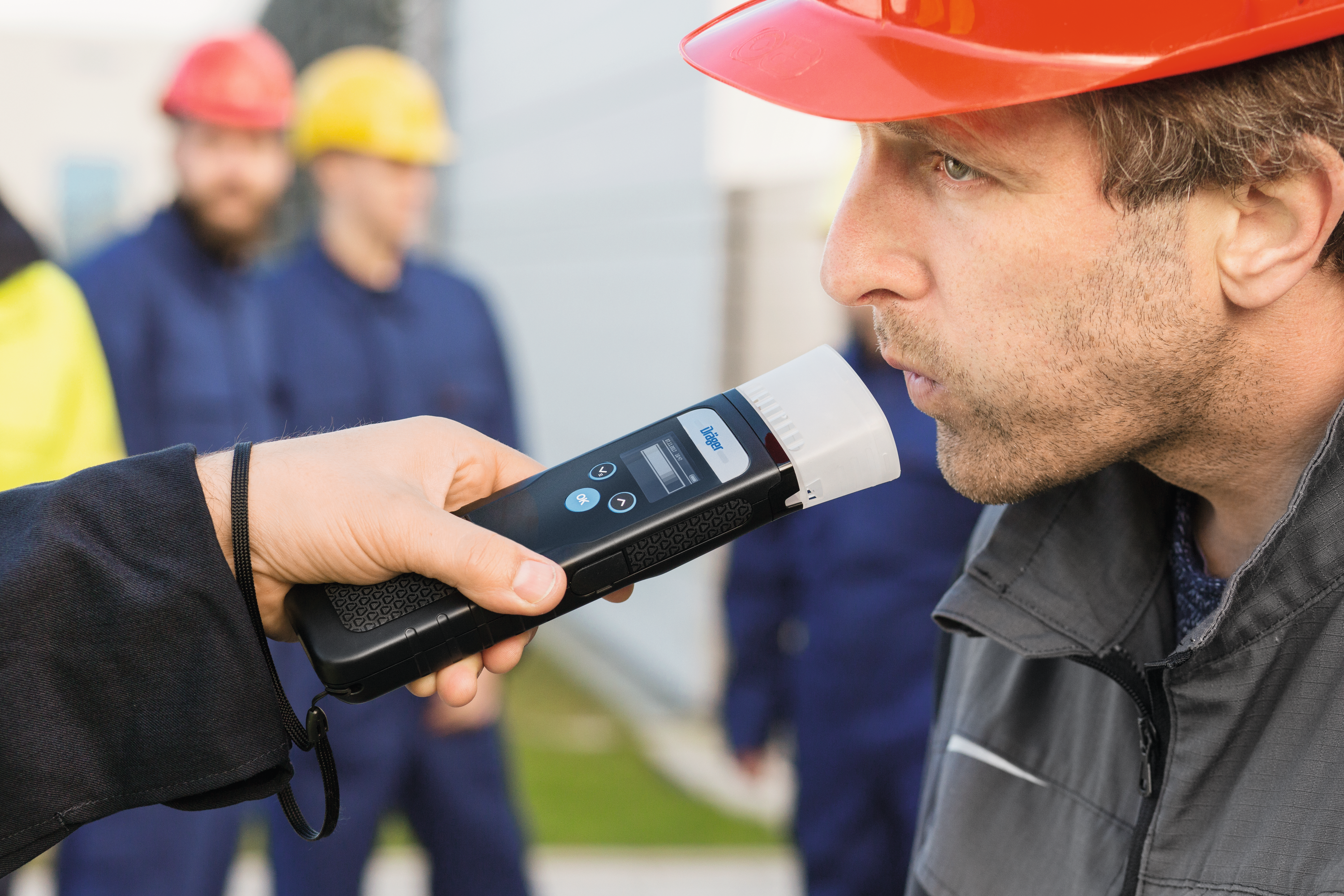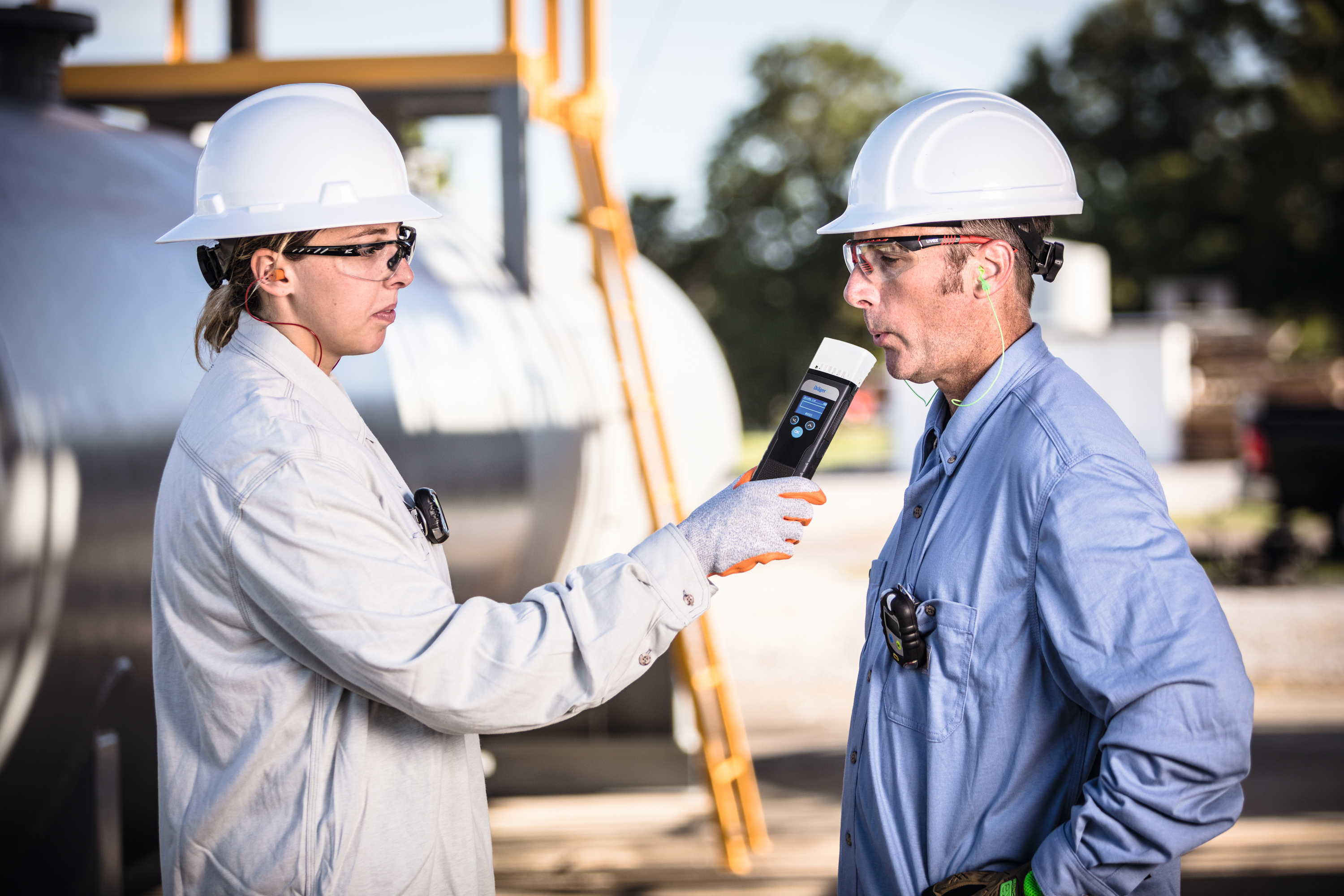
Alcohol and Drug Testing on Board
Contact usEffective screening policies for every industry
According to research done by the Chartered Institute of Personnel and Development (2014), drugs and alcohol contribute to 26% of accidents in the workplace – costing the UK more than £4bn per year. Over many decades, Dräger has gained extensive experience and expertise in alcohol and drug screening, with the aim of helping to decrease these numbers. Indeed, for the past 60 years, we have been a world leader in the field of alcohol screening with many hundreds of police forces across the world. Increasingly, policymakers, employers and Health and Safety professionals in many workplaces are turning to Dräger to help improve the safety of their employees and assets.
Alcohol and Drug corporate testing policies
It’s important to understand the legal implications and high costs your business could incur due to drug and alcohol impairment in the workplace. As an employer, you should keep up to date with changing legislation around substance misuse. Under the Safety, Health and Welfare at Work Act, 2005, companies are obliged to provide a safe place of work as far as reasonably practicable – and implementing corporate testing policies can help to a great extent in this regard. There are six test categories when workplace testing may become applicable: for cause, post-incident, random, pre-employment, post-rehabilitation/return to work and job-specific. Employers and workplaces that wish to carry out drug and alcohol testing on employees must have a workplace policy in place.


What do substance screening policies look like?
Every policy relating to drugs and alcohol should be outlined in a formal corporate document that defines your company’s stance on alcohol and drugs at work. These documents should provide clear instructions for employees and employers, formal information on non-compliance, details on how abuse issues will be handled and a procedure whereby employees with a problem can seek assistance.
The advantages of screening policies
Effective drug and alcohol testing policies can help to ensure the safety of your staff and other people around them. They can act as deterrents, helping to ensure all employees are aware of the risks, consequences and legal costs of their actions. They also help to maintain the reputation of your company and its products, safeguard company assets from damage and theft, reduce absenteeism and increase team morale, as well as demonstrate company standards – all of which can have a direct effect on your company’s progress and efficiencies.

Pros and Cons - Oral Fluid Drug Testing versus Urine Drug Testing
Hygiene, time-efficiency, accuracy and workplace over lifestyle testing are some of the things we believe to be advantageous with oral fluid drug testing over urine testing.
Oral fluid testing
Oral fluid is an established matrix for drug screening in the workplace which detects parent drugs. An important advantage is that it is relatively easy to obtain for collection. It can also be carried out with minimal training and easily observed, therefore it is less susceptible to adulteration. The acceptance of oral fluid as a non-invasive, simple way of drug detection has led to the extensive use in a wide variety of settings. Useful in the detection of recent drug use, results can be used to build part of a case to prove impairment.
Oral fluid drug detection times are shorter than Urine (5 – 48 hours compared with 1.5 – 4 days respectively). Oral fluid testing results are indicative of very recent consumption of psychoactive drug substances and therefore provides qualitative information on recent drug consumption. Oral fluid drug test kits can be compact and used anywhere whilst providing data capture for auditing purposes which makes these devices ideal for workplace testing.
Before a sample is taken there should be a period of 10 minutes where nothing is passed through the mouth or nose. A look in the mouth should be performed to make sure nothing is inside.
The non-heterogeneous matrix, for example, changing viscosity of salvia, means that is necessary to use a buffer solution to ensure consistency of detection.
Urine testing
Urine testing can be collected in large volumes. For the majority of metabolites it is the best known technology due to its extensive scientific base of knowledge. Urine testing is a mature technology, well-regulated and has an advantage of indicating drug use over the previous few days.
Indicating drug use over the detection window of 2-3 days for most drugs can also be seen as negative as we begin to look at Lifestyle over Workplace testing. Longer detection windows mean that the presence of the metabolite in urine may not imply presence of the parent drug in the blood.
The inability to observe the sample collection means that adulteration is possible. Persons tested often delay and take on extra fluids in the hope of reducing the concentration of the metabolite in the sample. Handling of this type of testing can be difficult and is quite invasive requiring special rooms, toilets, same sex observations and potentially a lot of time for collection wasted leading to loss of work hours and therefore large costs to the employers.




